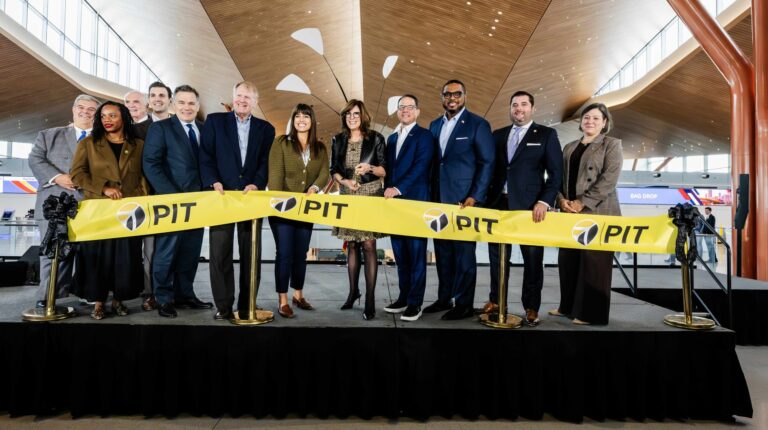Pittsburgh International Airport (PIT) marked a major milestone on Saturday, October 11, with the ribbon cutting at its new terminal – a US$1.7bn project designed to reflect the region’s identity and prepare the airport for the future. The event drew more than 300 guests, including airport leaders, government officials, airline partners and community representatives.
The new terminal, which broke ground in 2021, is set to open to passengers later this autumn. It represents a shift in PIT’s strategy, from its former role as a major connecting hub to a more locally focused origin-and-destination airport. The project was funded primarily by the airport’s airline partners, with no local tax dollars used.
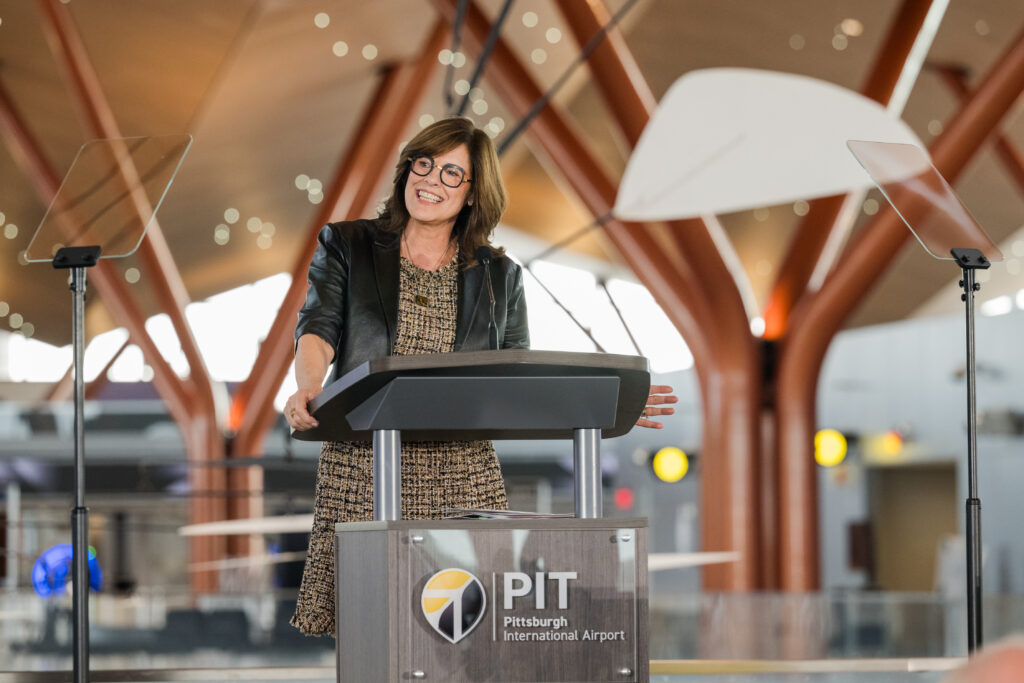
Christina Cassotis, Pittsburgh Airport’s CEO, described the terminal as “inspirational,” saying it was designed for passengers and employees alike. ‘Being in this space feels good, and that’s a pretty big statement for an airport today,” she commented.
A series of trial runs and public events led up to the terminal’s official opening, including a gala with performances from local artists on October 3. Saturday’s ceremony also included a community open house, which welcomed more than 10,000 visitors and featured activities from local organizations such as the Children’s Museum of Pittsburgh and the Kamin Science Center.
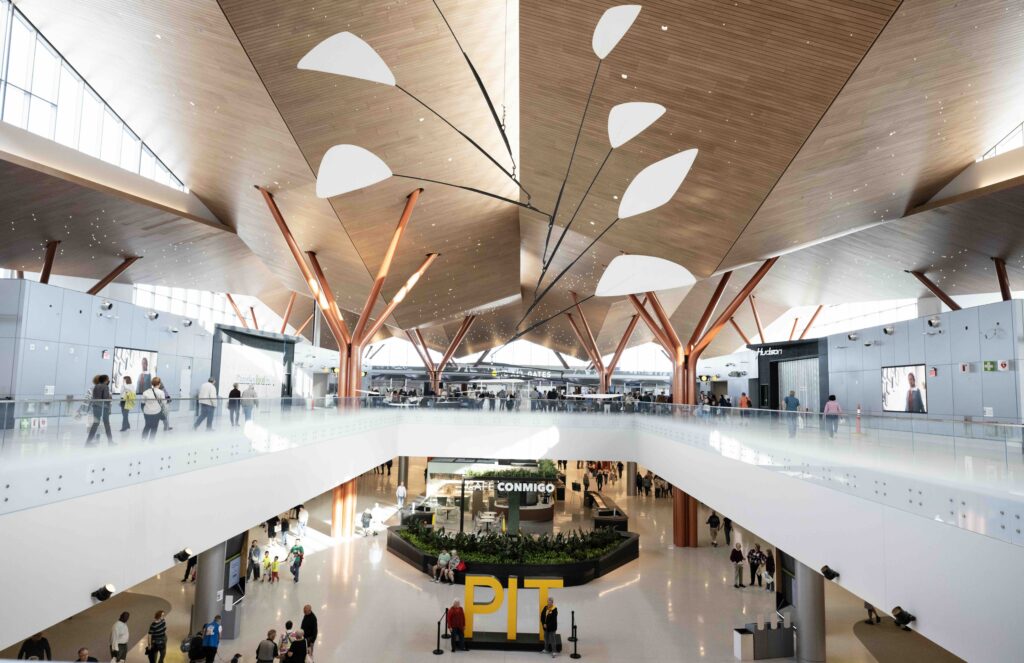
Elected officials at the event – including Pennsylvania Governor Josh Shapiro, US Senator Dave McCormick, and Allegheny County Executive Sara Innamorato – praised the terminal as a model of collaboration between public and private partners. “Today marks more than just the unveiling of a beautiful terminal – it’s a celebration of what can be accomplished by working together with vision and determination,” McCormick said.
The new terminal aims to improve the passenger experience while supporting continued air service growth. Over the past decade, PIT has expanded its network from 36 to 62 non-stop destinations and grown its carrier count from seven to 15, adding legacy and low-cost airlines. Recent route additions include American Airlines to Los Angeles, JetBlue to New York-JFK and Fort Lauderdale, and Delta Air Lines to Salt Lake City. Southwest is expanding to 21 routes next summer.
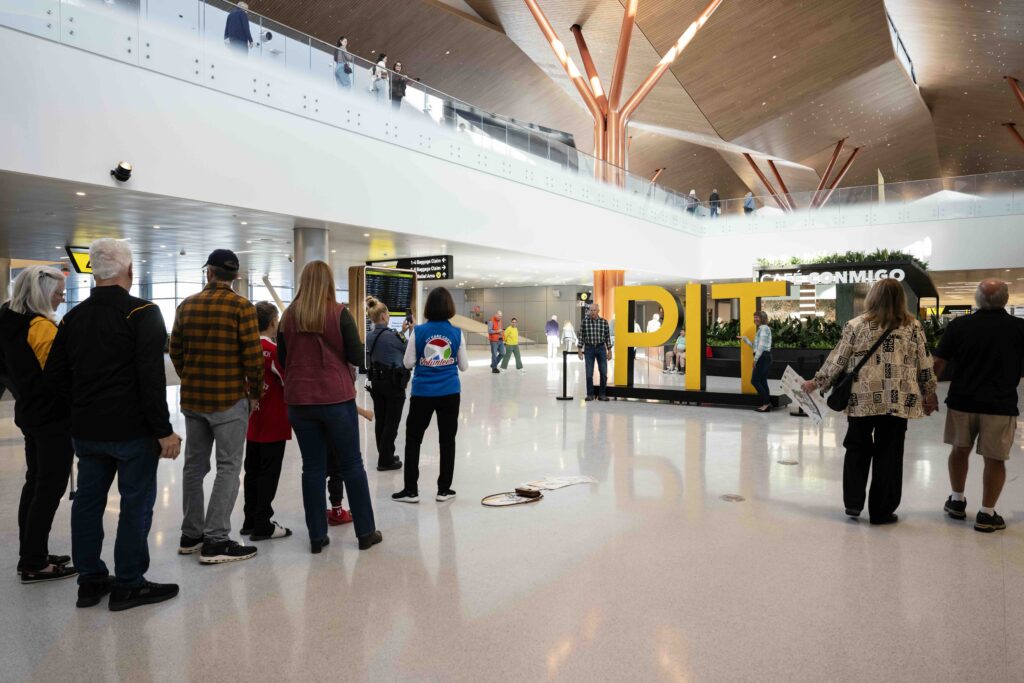
The terminal, which was designed by Gensler + HDR, in association with Luis Vidal + Architects, incorporates architectural features inspired by the Pittsburgh region. Its rolling roofline mirrors the surrounding hills, while tree-like support columns and terrazzo floors with leaf motifs pay tribute to local forests. The ceiling’s constellation lighting uses more than 4,000 bulbs to mimic the night sky. The facility also includes four outdoor terraces – two before and two after security – making PIT one of only a few US airports to offer open-air spaces for travelers.
The terminal’s construction generated an estimated US$2.5bn in regional economic activity, creating over 14,300 jobs and US$1bn in direct labor income. More than 90% of the materials and labor were reportedly sourced locally, including the steel that supports the building’s foundation.
Innamorato described the terminal as “an economic jet engine” for the region, highlighting programs such as PIT2Work, which helped local students gain experience in the construction trades.
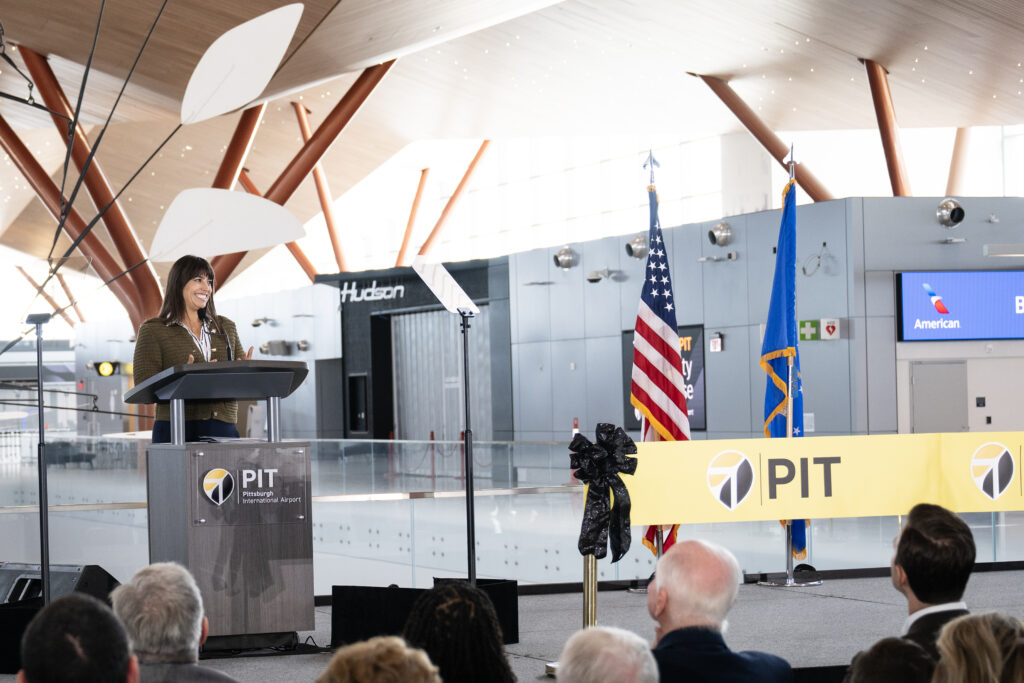
With the new facility soon to open, officials say PIT is positioned to serve as the “front door” to the city for worldwide visitors, including during the 2026 NFL Draft. Cassotis said the project represents Pittsburgh’s ability to achieve ambitious goals through collaboration: “When we work together, this community makes great things happen.”
You can read more about the project in an exclusive feature first published in the June 2026 issue of PT World.
In related news, San Diego International Airport celebrates the opening phase of its new $3.8bn Terminal 1

